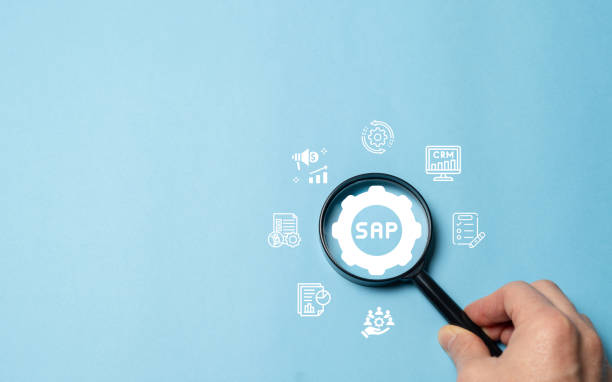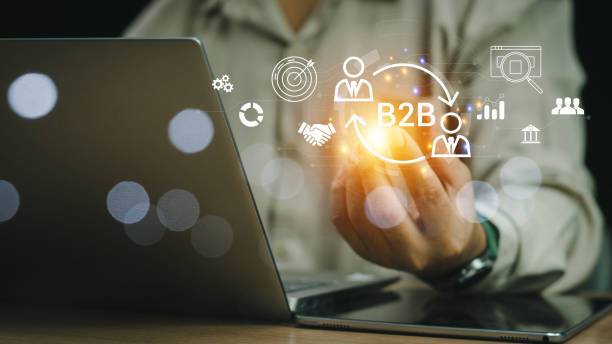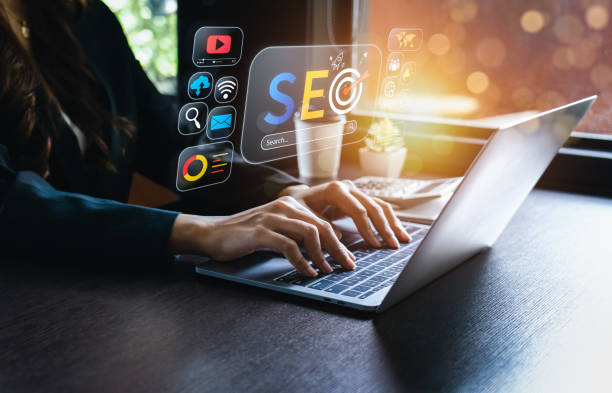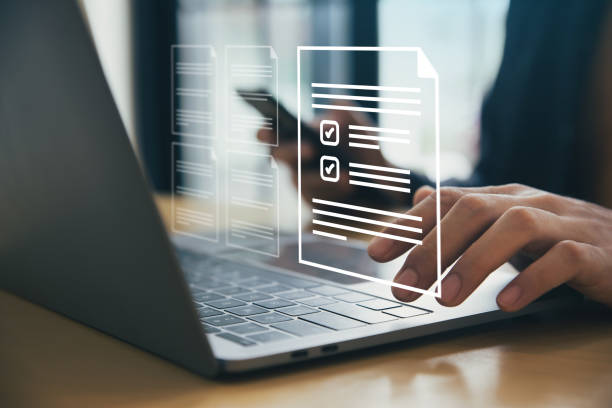Introduction to the Importance of On-Page SEO and Its Impact on Ranking

In today’s highly competitive web world, simply having a website is not enough; you must be seen.
This is where the pivotal role of #On_Page_SEO becomes prominent.
#On-Page SEO is a set of techniques and strategies applied within the website itself to optimize your pages for #search_engines and, of course, #users.
The main goal of On-Page SEO is to send clear and understandable signals to Google’s crawling bots so they can better comprehend your content and recognize its value.
By optimizing your On-Page SEO, you tell Google what each page is about, how authoritative and relevant it is, and why it should appear in search results for specific keywords.
This educational and specialized process, from selecting appropriate keywords to optimizing URL structure, title tags, and meta descriptions, are all integral parts of a comprehensive On-Page SEO strategy.
The importance of these actions becomes clear when you realize that even the best content, without proper On-Page SEO, may never reach its audience.
Understanding the basic and advanced principles of On-Page optimization, is the first step towards achieving top rankings in search engines and increasing organic traffic.
Tired of your company’s website not being seen as it deserves, and losing potential customers? Solve this problem forever with professional and effective website design by Rasaweb!
✅ Increase brand credibility and gain customer trust
✅ Attract targeted sales leads
⚡ Contact us now for a free consultation!
Keyword Research: The Beating Heart of On-Page SEO

Keyword research is one of the most fundamental and guiding steps in On-Page SEO.
Without the right keywords, your efforts to optimize the site will go astray.
This step involves identifying the phrases and words your target audience enters into search engines to access content similar to yours.
Specialized keyword research should go beyond high-volume keywords and also pay attention to Long-Tail Keywords (longer and more specific phrases) which usually have less competition and bring higher conversion rates.
Tools like Google Keyword Planner, Ahrefs, and Semrush can assist you in this analytical process.
After identifying primary and secondary keywords, you should distribute them naturally and purposefully throughout your page content.
This distribution should be such that it does not disrupt the user experience and your content remains readable and valuable.
Understanding user search intent (Search Intent) is crucial at this stage; are they looking for educational information, intending to buy, or seeking answers to a thought-provoking question? Successful On-Page SEO is built on a deep understanding of the audience and the words they use.
This knowledge paves the way for producing highly relevant and optimized content.
Optimizing Important On-Page Elements
![]()
After selecting keywords, it’s time to apply them to the main page elements.
This part of On-Page SEO includes optimizing the Title Tag, Meta Description, Heading Tags (H1-H6), and URL.
Each of these elements plays a vital role in sending clear signals to search engines and helps bots better understand your page content.
The title tag, the most important On-Page element, should contain the main keyword and be attractive to both convince search engines and encourage users to click.
Meta descriptions, although not directly affecting rankings, play an important role in click-through rate (CTR) and should provide an attractive summary of the page content.
Using the H1 tag for the main page title and H2-H6 tags for organizing sub-sections provides a logical structure to the content and increases its readability.
Also, the page URL should be short, descriptive, and contain the main keyword.
A general guideline in this area is to use keywords at the beginning of title tags and descriptions to emphasize their importance.
On-Page SEO is not limited to keywords; it also addresses how these words are displayed and organized within the page structure.
These specialized and explanatory actions form the foundations of successful On-Page SEO.
In the table below, we briefly review these elements and their importance:
| Element | Description | On-Page SEO Tip |
|---|---|---|
| Title Tag | Clickable title displayed in search results. | Includes main keyword, short and attractive, less than 60 characters. |
| Meta Description | A short summary of the content that appears below the title in search results. | Encouraging clicks, includes keywords, around 150-160 characters. |
| Heading Tags (H1-H6) | Hierarchical structure for titles and subtitles on the page. | H1 only once and includes the main keyword, logical use of H2-H6. |
| Friendly URL | Web page address. | Short, readable, includes main keyword, with hyphens (-) instead of spaces. |
The Importance of High-Quality and Comprehensive Content in On-Page SEO

Content is king, and this statement holds true more than ever in the world of On-Page SEO.
Producing high-quality, comprehensive, and valuable content not only sends positive signals to search engines but also significantly improves the user experience.
Your content should be original and authentic, address user needs, and answer their questions.
Avoiding plagiarism and producing duplicate content are fundamental principles.
Specialized content can include educational articles, step-by-step guides, in-depth analyses, or even answers to frequently asked questions.
The important point is that your content should be high-quality content and rich in information, not just filled with keywords.
Google is smarter than to promote low-quality content.
Content that engages users, is thought-provoking, and encourages them to stay longer on the page will have a positive impact on On-Page SEO.
Content length is also important; longer articles that comprehensively cover a topic usually rank better.
But length alone is not enough; content should also be well-structured and readable, using short paragraphs, lists, and relevant images.
This engaging and explanatory approach significantly helps improve On-Page SEO, making your pages attractive not only to algorithms but also to humans.
Don’t have a corporate website yet and are missing out on online opportunities? With professional corporate website design by Rasaweb,
✅ Double your business credibility
✅ Attract new customers
⚡ Free consultation for your corporate website!
Optimizing Images and Multimedia Files for On-Page SEO

Images and multimedia files like videos and infographics play an important role in content attractiveness and improving user experience.
However, they must be properly optimized for On-Page SEO so that instead of slowing down the site, they help it.
The first step is image compression to reduce file sizes and increase page loading speed.
Many online tools are available for this purpose.
Then, using the Alt tag (Alternate Text) for images is crucial.
This tag helps search engines, as well as visually impaired users, understand the image content.
The Alt tag should include relevant keywords and a precise description of the image.
Image file names should also be descriptive and include keywords.
For example, instead of “image001.jpg”, use “seo-internal-optimization-guide.jpg”.
For videos, providing a transcript (Transcript) or textual summary can help search engines index the video content.
Also, hosting videos on platforms like YouTube and then embedding them on your site helps reduce server load and improve site speed.
A general guideline in On-Page SEO is that every visual element on your page is an opportunity to send positive signals to search engines, provided it is properly optimized.
The Importance of Internal Linking and Its Impact on On-Page SEO

Internal Linking is one of the most powerful On-Page SEO tools that is often overlooked.
Internal links are links that point from one page on your site to another page on the same site.
This not only helps users easily navigate your site and find relevant content, but it also helps search engines understand your site’s structure, discover new pages, and transfer “Link Equity” between different pages.
When a powerful (high-ranking) page links to another page, some of that page’s “power” is transferred to the destination page, helping improve its ranking.
The internal linking strategy should be such that your site’s important and key pages receive the most internal links.
Using descriptive anchor texts (Anchor Text) relevant to the target keyword is an important guideline in this area.
Avoid generic anchor texts like “click here” and instead use phrases like “On-Page SEO tutorial”.
A strong internal linking structure acts like a neural network for search engines, increasing their understanding of your content.
This is crucial, especially for large sites with a lot of content, and directly impacts the overall strength of your On-Page SEO.
Technical Aspects of On-Page SEO: Site Speed and Mobile-Friendliness

In addition to content and structure, technical aspects also play a significant role in On-Page SEO.
Page Speed and Mobile-Friendliness are two key factors that not only affect user experience but also directly impact your ranking in search results.
Google has repeatedly emphasized that site speed is an important ranking factor.
A slow-loading site will have a higher bounce rate and lose users.
To improve speed, you can compress images, optimize CSS and JavaScript codes, use a CDN (Content Delivery Network), and have high-quality hosting.
Mobile-friendliness is also of utmost importance, especially given that most searches today are conducted via mobile devices.
Your site should be designed to be responsive, meaning its layout automatically adapts to the user’s screen size.
Tools like Google PageSpeed Insights and Google Mobile-Friendly Test can help you evaluate your site’s current status and provide necessary guidance for improvement.
These specialized aspects of On-Page SEO are essential factors for success in today’s competitive landscape.
For ease of understanding, the table below shows some useful tools for checking technical aspects:
| Tool | Main Use | Importance in On-Page SEO |
|---|---|---|
| Google PageSpeed Insights | Analyzes page load speed for desktop and mobile. | Identifies opportunities to increase speed and improve user experience. |
| Google Mobile-Friendly Test | Checks site compatibility with mobile devices. | Ensures site usability on mobile, crucial for mobile rankings. |
| Google Search Console | Provides site performance data, errors, Core Web Vitals speed. | Monitors overall site health and identifies technical issues. |
User Experience (UX) and Its Role in On-Page SEO

In recent years, search engines have given increasing importance to user experience (UX).
An excellent user experience not only helps users easily navigate your site and find the information they need but also sends positive signals to search engines, leading to improved rankings.
Factors such as ease of navigation, content readability, attractive visual design, and site responsiveness all influence UX.
Good user experience can lead to a reduced bounce rate, increased time on site, and increased user engagement, all of which are important factors in On-Page SEO.
Thought-provoking content that encourages users to think and interact, or entertaining content that makes them stay longer on the site, are examples of useful approaches to improving UX.
Google, by introducing Core Web Vitals metrics, has specifically emphasized technical aspects and user experience.
A site with excellent UX implicitly shows search engines that it provides high value to users and is therefore worthy of higher rankings.
This is a comprehensive and analytical approach that goes beyond mere keyword optimization, addressing the entire user journey on your site and linking On-Page SEO with user satisfaction.
Are you concerned about your e-commerce site’s low conversion rate and not getting your desired sales?
Rasaweb is your specialized solution for having a successful e-commerce site.
✅ Significant increase in conversion rates and sales
✅ Professional and user-friendly design to ensure customer satisfaction
⚡ Ready for a revolution in online sales? Get a free consultation!
Monitoring and Analyzing On-Page SEO Performance

On-Page SEO is not a one-time process; rather, it requires continuous monitoring and analysis.
To ensure the effectiveness of your On-Page SEO strategies, you should regularly monitor your site’s performance using tools like Google Search Console and Google Analytics.
Google Search Console provides vital information about how your site is crawled and indexed by Google, the keywords you rank for, site errors, and mobile compatibility issues.
Google Analytics also provides valuable data about user behavior on your site, including traffic, bounce rate, time spent on page, and navigation paths.
By analyzing this data, you can identify the strengths and weaknesses of your On-Page SEO strategy and make data-driven decisions.
For example, if a specific page has a high bounce rate, it might indicate that the content is not engaging enough or there’s a loading speed issue.
This is a continuous analytical process that allows you to keep up with algorithm changes and user behavior.
Also, staying updated with news about Google updates and how they impact On-Page optimization is essential so you can quickly adapt your strategies and maintain your competitive edge.
Advanced Tips and the Future of On-Page SEO

With the continuous advancement of technology and search engine algorithms, On-Page SEO is also evolving.
Beyond the basic principles, there are several specialized and advanced tips that can help you further improve your On-Page SEO.
One such aspect is optimizing for Voice Search.
With the increasing use of voice assistants, people express their questions more naturally and conversationally.
Your content should target these types of queries and provide direct and concise answers.
Using Structured Data (Schema Markup) also helps search engines better understand your content and display it in specific ways in search results (such as Rich Snippets), which can significantly increase click-through rates.
E-A-T (Expertise, Authoritativeness, Trustworthiness) is also an important concept in SEO that emphasizes the quality and credibility of the content and author.
Educational and specialized content written by authoritative sources has more value in Google’s eyes.
The future of On-Page SEO is moving towards a deeper understanding of user intent, artificial intelligence, and immersive user experience.
By staying aware of these trends and continuously updating your knowledge, you can always keep your On-Page optimization strategies at their peak and outperform the competition.
Frequently Asked Questions
| Question | Answer |
|---|---|
| What is On-page SEO? | On-page SEO refers to a set of actions performed within the website and on page content to achieve a better ranking in search results. |
| Why is On-page SEO important for a website? | On-page SEO helps search engines better understand your page content and assess its importance. It also provides a better user experience for visitors. |
| What are the most important On-page SEO factors? | The most important factors include keyword optimization, content quality, Title Tag, Meta Description, URL structure, Heading Tags (H1-H6), internal linking, and image optimization. |
| What role does the Title Tag play in On-page SEO? | The Title Tag is one of the most important On-page SEO factors, displaying your page title in search results and browser tabs. It should include the main keyword and be engaging. |
| What is the importance of Meta Description in On-page SEO? | The Meta Description provides a summary of the page content, and although it doesn’t directly affect rankings, it can increase the click-through rate (CTR) by encouraging users to click. |
| How are keywords used in On-page SEO? | Keywords are phrases users employ to search for information in search engines. Proper and natural use of them in content helps the search engine identify the page’s topic. |
| What is internal linking and what is its benefit in On-page SEO? | Internal linking refers to creating links between different pages of a website. This helps in distributing page authority, assisting search engine bots in crawling, and improving user experience. |
| How does image optimization affect On-page SEO? | Image optimization includes compressing size, using appropriate Alt tags, and proper file naming. This improves page loading speed and helps search engines understand image content. |
| What does high-quality content mean in On-page SEO? | High-quality content means content that is comprehensive, accurate, unique, up-to-date, and user-friendly, and addresses user needs. |
| What role does URL structure play in On-page SEO? | Readable, short, and keyword-rich URLs help search engines and users better understand page content and improve the user experience. |
And other services of Rasaweb Advertising Agency in the field of advertising:
Smart UI/UX: An effective tool for user interaction with the help of SEO-driven content strategy.
Smart Brand Identity: Revolutionize campaign management with precise audience targeting.
Smart Advertising Campaign: Professional optimization for customer acquisition using an SEO-driven content strategy.
Smart Digital Advertising: An effective tool for online growth with the help of key page optimization.
Smart Social Media: Revolutionize click-through rate increase with marketing automation.
And more than a hundred other services in the field of internet advertising, advertising consulting, and organizational solutions.
Internet Advertising | Advertising Strategy | Advertorials
Sources
SEO Training at WebsimaSEO Articles at SEO RoozMeead Kohan Blog – SEOSEO Optimization at Raya Marketing
📍 To elevate your business in the digital world, Rasaweb Afarin Digital Marketing Agency paves your path to success by offering innovative solutions including custom website design, professional SEO, and targeted advertising campaigns. Join us to establish a powerful presence in the online market.
📍 Tehran, Mirdamad Street, Next to Central Bank, Southern Kazerun Alley, Ramin Alley, No. 6


